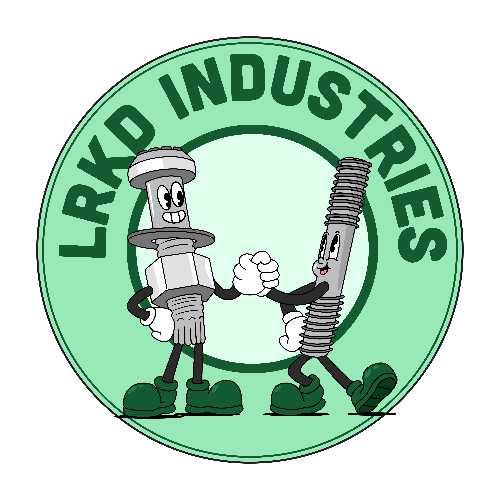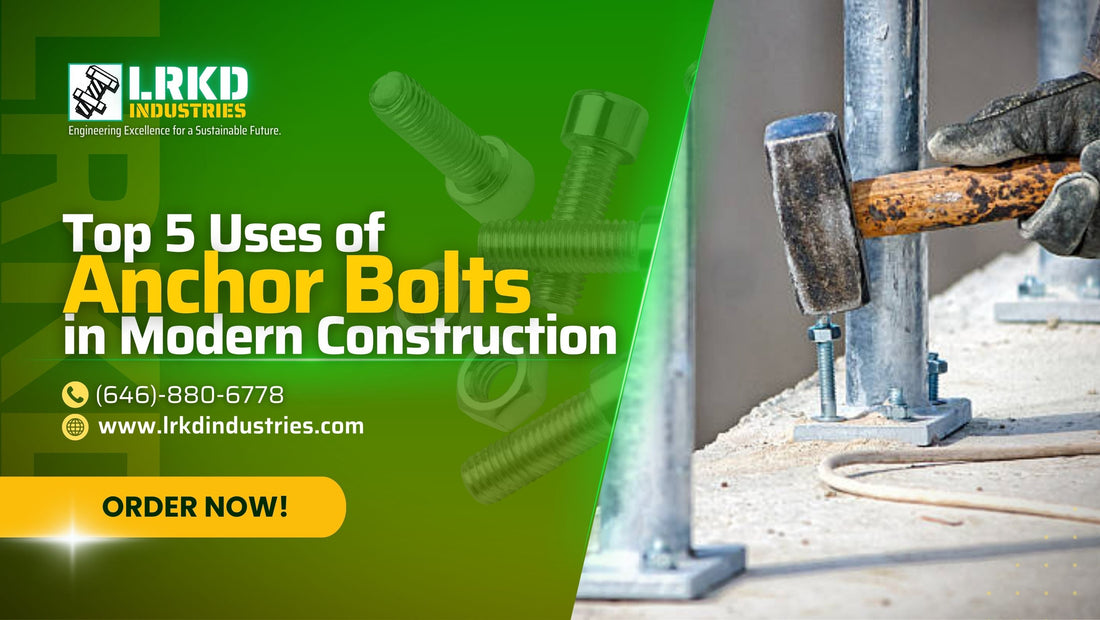In the world of construction, every detail matters. The strength of a towering skyscraper or the stability of a sprawling bridge often hinges on the smallest components. Among these unsung heroes are anchor bolts—small but mighty tools that secure structures to their foundations. Whether you're an architect, engineer, or contractor, understanding the versatility of anchor bolts can transform how you approach construction projects. Let’s dive into their top five uses and why they’re indispensable in modern construction.
1. Securing Structural Columns: The Backbone of Stability
Picture a massive steel column standing tall amidst a construction site. Without anchor bolts, that column wouldn’t stand for long. Anchor bolts are crucial in securing steel or concrete columns to their foundations, ensuring the stability of buildings and bridges.
In high-rise construction, these bolts absorb the forces of wind, earthquakes, and other environmental stresses.
For example, the Burj Khalifa—the tallest building in the world—relies on a meticulously designed anchor bolt system to support its weight and resist shifting winds. Imagine the chaos without these dependable tools holding everything in place!
Pro Tip: Always select anchor bolts that match the load-bearing requirements of your project. A mismatched bolt can compromise the safety and longevity of your structure.
2. Attaching Equipment and Machinery
Ever noticed how industrial machines stay securely in place despite their constant vibration? That’s thanks to anchor bolts. These bolts ensure that heavy equipment, such as HVAC units, generators, and industrial pumps, remains firmly fixed to the ground.
A real-world example is the use of anchor bolts in power plants. Turbines, which generate immense rotational force, are mounted on foundations using high-tensile anchor bolts. These bolts prevent movement that could disrupt operations or lead to costly repairs.
Why It Matters: Properly installed anchor bolts reduce wear and tear, increase equipment lifespan, and enhance safety in industrial environments.
3. Securing Bridges and Overpasses
Bridges are marvels of engineering, but their safety depends significantly on anchor bolts. These bolts are used to attach bridge decks, railings, and expansion joints to the underlying structure.
Consider the Golden Gate Bridge, where anchor bolts play a critical role in securing its suspension cables. These bolts ensure that the bridge can endure the forces of traffic, weather, and seismic activity.
Did You Know? Anchor bolts used in bridges often undergo rigorous testing to withstand extreme conditions. High-performance materials like stainless steel and coated alloys are commonly used to prevent corrosion and maintain durability.
4. Mounting Light Poles and Signage
Driving through a city, you’ll notice streetlights, traffic signals, and signage everywhere. These elements are securely mounted to their foundations using—you guessed it—anchor bolts.
For example, the iconic Times Square signage relies on anchor bolts to keep its dazzling displays safely in place. Without these bolts, those structures could pose a hazard to pedestrians and vehicles below.
Quick Tip: Always check for compliance with local safety standards when installing anchor bolts for outdoor structures. This ensures they can withstand environmental forces like wind and rain.
5. Supporting Aircraft Cable Systems in Construction
Aircraft cable systems, often used for suspension bridges or tensile structures, rely on anchor bolts to maintain tension and stability. These cables distribute loads efficiently, and anchor bolts secure them to foundations or support beams.
One notable application is the roof design of stadiums like the Mercedes-Benz Stadium in Atlanta. Its retractable roof relies on a network of aircraft cables secured by anchor bolts to achieve both flexibility and strength.
What to Consider: When working with aircraft cable systems, ensure the anchor bolts are rated for the specific tension and load requirements to avoid structural failure.
Key Considerations for Using Anchor Bolts
Material Selection: Choose materials that resist corrosion and match the environmental conditions of your project (e.g., galvanized steel for outdoor use).
Installation Precision: Misaligned anchor bolts can lead to structural instability. Always follow manufacturer guidelines and use precision tools during installation.
Regular Inspections: Over time, anchor bolts may loosen due to environmental factors or wear. Schedule periodic inspections to maintain safety and performance.
Small Tools, Big Impact
Anchor bolts may seem like minor components in the grand scheme of construction, but their importance cannot be overstated. From holding up skyscrapers to securing the smallest streetlight, these bolts are the unsung heroes ensuring stability and safety in modern construction.
So next time you walk across a bridge or marvel at a city skyline, remember the humble anchor bolt working tirelessly behind the scenes. Ready to start your next project? Ensure you’re equipped with the right anchor bolts for the job, and you’ll build not just structures but legacies that stand the test of time.
Essential Applications in Today’s Construction Projects
Save your detailers some time! Whether it's for a bid or an existing project, we're able to perform a comprehensive take-off for the anchor bolts needed based on your set of drawings. This service is ideal for teams who need fast, accurate material quantification without the manual work.
Contact LRKD Industries now for this time-saving service!
👉 Submit your plans today for a FREE consultation and anchor bolt take-off evaluation.
📍 Address: 98 N Industry CT, Deer Park, NY 11729, US
📞 Phone: +1 646-880-6778
📧 Email: info@lrkdindustries.com
We are also able to convert the files into ".dwg" format compatible with Tekla, ensuring smooth integration with your modeling and fabrication workflows.
For more information about our anchor bolt products, click here.
When every bolt counts, accuracy isn't optional—it’s essential.


